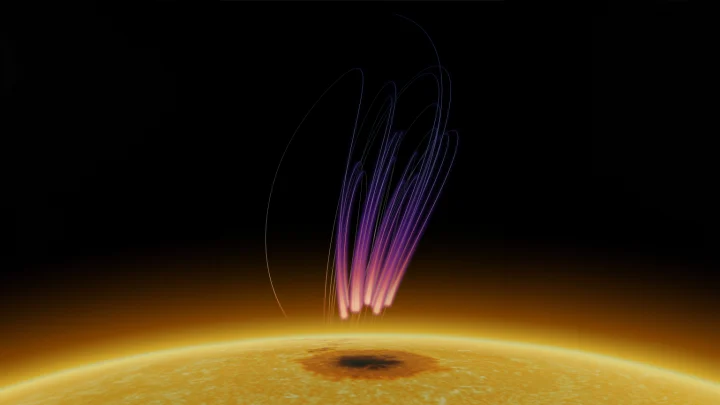A NASA-funded team of scientists has discovered long-lasting radio signals emanating from the Sun that are similar to those associated with auroras—the northern and southern lights—on Earth.

Scientists have discovered radio bursts above a sunspot resembling radio emissions from Earth’s auroras. The pink-purple streaks in this illustration represent the radio emissions, with higher-frequency radio signals in pink, closer to the sunspot, and lower frequencies in purple. The thin lines represent magnetic field lines above the sunspot. The sunspot is the dark region on the Sun at the bottom. Image credit: Sijie Yu, New Jersey Institute of Technology
Detected about 25,000 miles (40,000 km) above a sunspot – a relatively cool, dark, and magnetically active region on the Sun – such radio bursts had previously been observed only on planets and other stars.
“This sunspot radio emission represents the first detection of its kind,” said Sijie Yu of the New Jersey Institute of Technology, Newark, who is the lead author of a paper reporting the discovery in the January 2024 issue of Nature Astronomy. The research was first published online in November 2023.

Featured Post

